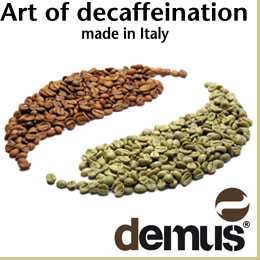MILAN – How many things we don’t know about the rituals that characterise our days: from coffee to tea, as consumers we often ignore the work behind the final product that we enjoy at home or in bar. In this regard, we share an interesting insight provided by Changsha Wufeng Tea Co, on tea processing.
The tea supplier from China provides a glimpse into the world behind a complex ceremony that obviously starts with the soil and the raw material.
At the origin of this beverage is a production chain that respects the cycles of nature and the long processes of leaf transformation. The images collected are a visual account of what happens in faraway lands, thanks to the work of a few growers.
Tea: times, methods, processes

After one and half a months pile fermentation (Wo Dui) and put for around two months for natural transform, the old tree shu pu-erh was ready and sent for sorting. It was sorted by size into Regular grade, Gong Ting Grade and Lao Cha Tou.

In the middle of September, the old tree mao cha was piled for fermentation in Song Shan Tea Plant of Yongde in Southwest Yunnan.

Spring water was sprayed on the mao cha to moisten the tea for fermentation. The quality of water is very important to the quality of outcome shu pu-erh. Because some water might bring in strange smell or even chemicals. In the more than 40 years history of Song Shan Tea Plant processing of shu pu-erh, high quality spring water was used all the while.
But seeing how this ingredient is also fundamental to achieving a product of a certain standard should not come as much of a surprise to readers, who are already accustomed to considering this factor in the preparation of coffee.

This is the tea master, Yang, who was the founder of this plant, and witnessed the invention of Shu pu-erh in Yunnan in 1970s. He is the representative of the technology level of Yunnan Shu Pu-erh. Despite that now he ages 72. He himself still works diligently, followed by his workers.




This is in the middle of the pile fermentation. The tea is covered by a layer of palm coir coat. The pile fermentation is engaged by a lot of magical microorganisms, which are very critical to the quality shu pu-erh. The community of microorganisms in Song Shan Tea Plant has been steadily evolved for nearly 40 years. It is stable and consistent, which ensures the consistent good quality of each batch of tea processed by the plant. Visitors are strictly prohbited from going to the workshop, worrying bringing in foreign microorganisms.



Usually the tea will be put for another one or two months for natural transform before sorting. There are 2500KG of sheng pu-erh maocha for processing this batch of Shu Pu-erh. After the pile fermentation, there are 1912KG of Shu Pu-erh, which means around 24% loss during the pile fermentation processing.




This is Lao Cha Tou of shu pu-erh after sorting. It is the essence of shu pu-erh tea. A lot of tea juice concentrate during the pile fermentation and forms the hard block, which can not easily be dismissed. It is composed by around 13% of the final product. (The rest of around 15% is the fannings, broken and dust of tea, which can not be on the grades).

This is the brewing of Old Tree Shu Pu-erh. It has bright clean red liquor, and gives off a kind of chinese date sweet flavor. The mouth feeling is very mellow smooth. The taste is rich and aftertaste is deep. Pure sweet flavor and rich deep taste is the main difference of this batch od tree shu pu-erh from ordinary material ones.
The old shu pu-erh tree is ready and is available in loose leaves of the qualities indicated above and also customisable for compression. There are six options of different shapes and sizes. These are 7 g coins, 5 g mini tuocha, 100 g tuocha, 250 g brick, 357 g cake and 200 g cake.


















